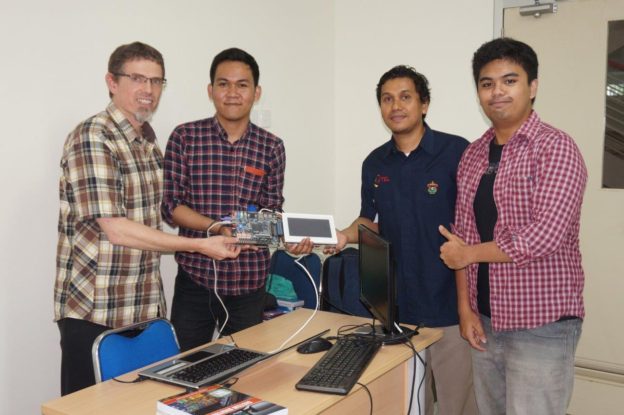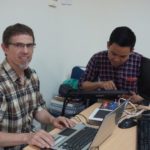What is the difference between Nasi Goreng and Rice?
One is an ingredient or staple, the other a dish. There are many ways of cooking Nasi Goreng but we would probably all agree that its main component is rice.
In computer systems the analogy would be between “System on Chips (SoC)” (complex integrated chips with a processor) and “Embedded Computer Systems” (electronic product consisting of hard- and software). Just like rice can be used in many different dishes, the SoC appears in different embedded devices. Most of us are not aware of how much these embedded systems influence our daily life. Appliances, home devices, vehicles, medical equipment, and of course the indispensable smart phones – embedded computer systems are found everywhere. Can we imagine how our life would look like without these smart devices? As most of our Asian friends would probably agree a dish without rice is not complete.
If we asked a “digital native” what a computer is we would get a different answer than from a “digital immigrant”. “Digital natives” (born after the millennium) grew up from early childhood with smart phones and tablets and are thus “native speakers” of the languages of computers, social media, video games and the internet. “Digital immigrants” (born before the millennium), in contrast, only gained familiarity with digital technology as adults. For them computers are primarily laptops and desktops.
In the academic world – especially in engineering courses and computer science – we need to give this generation of “digital natives” access to cutting-edge digital technologies and further equip them as they engage with this new exciting digital era.
At the Department of Electrical Engineering of Hasanuddin University we’re developing a new syllabus and related laboratory work that addresses this need.
Based on other fundamental courses in the field of digital system design students learn how to design these embedded systems (dish) by applying modern design method and implementing the needed system functions/building blocks (ingredients). It is a complex task but (to continue using the “Nasi Goreng” illustration) there are good cookbooks available. The students are still finding out how the “ingredients” work together (e.g. how can we display information on a LCD monitor that is received from a light sensor) but already get a first impression of how it tastes.
It is my hope that students in East Indonesia will become more confident and knowledgeable as they “pick & mix” the ingredients and create delicious dished that have the seal of a Masterchef!



